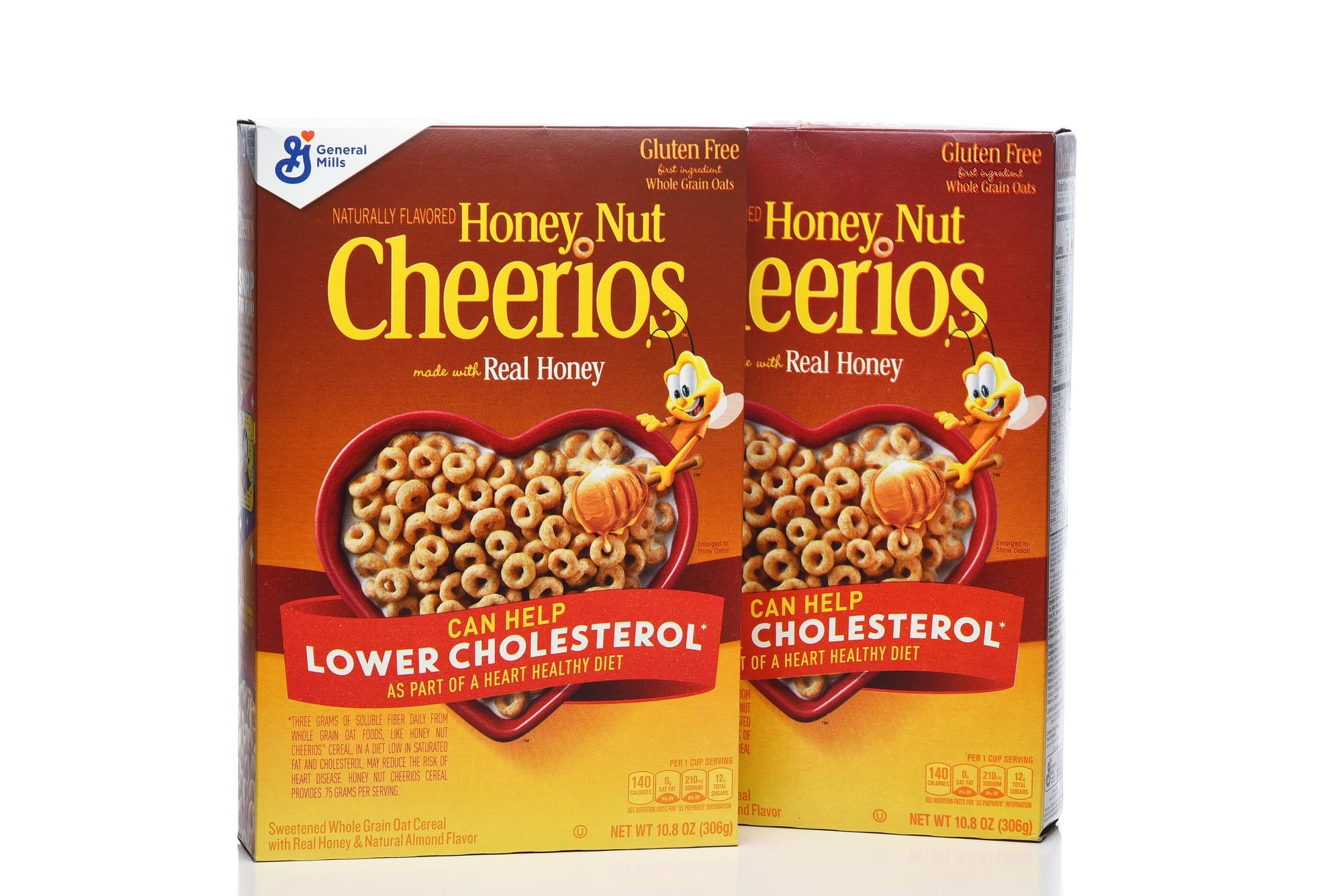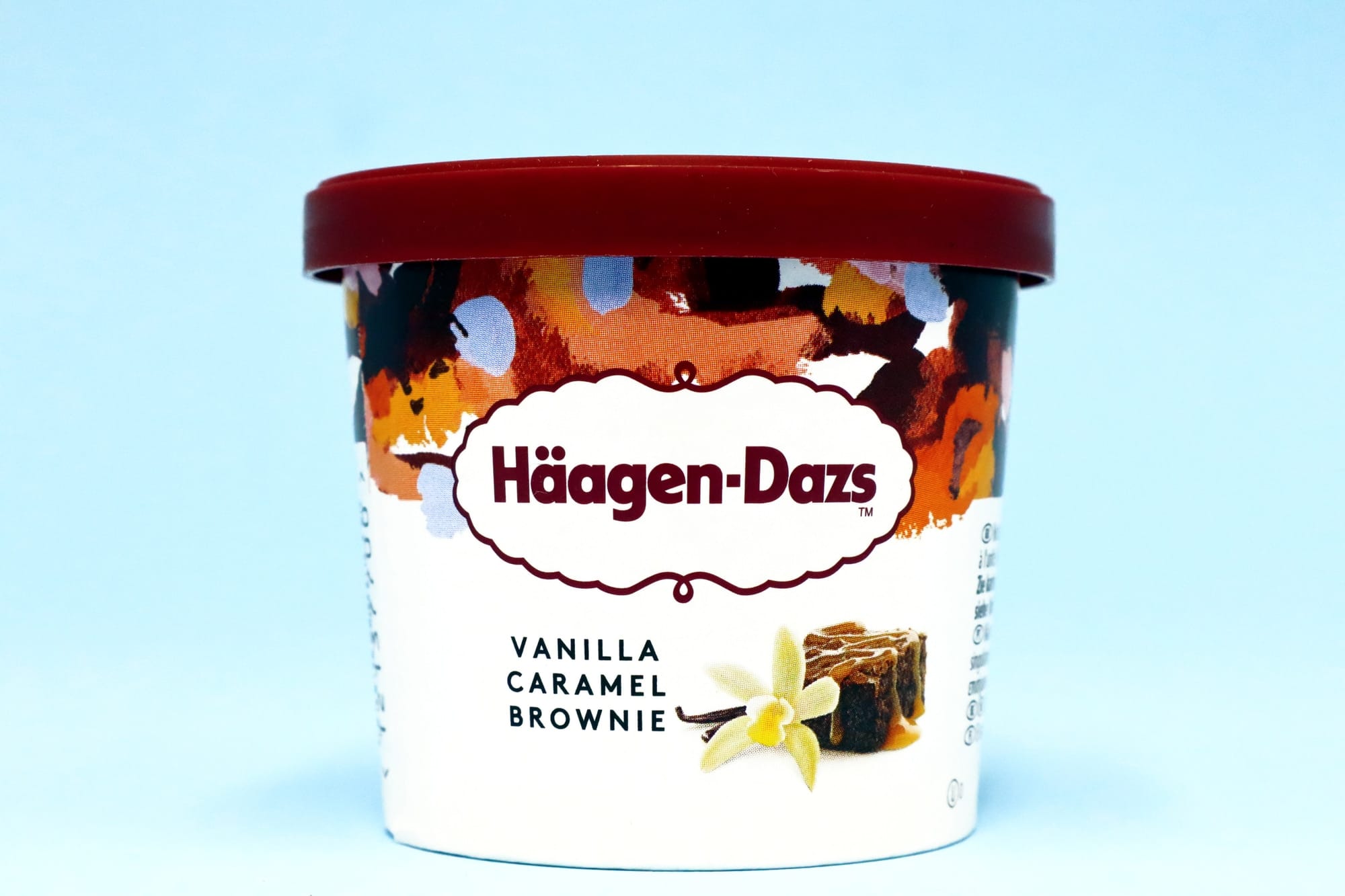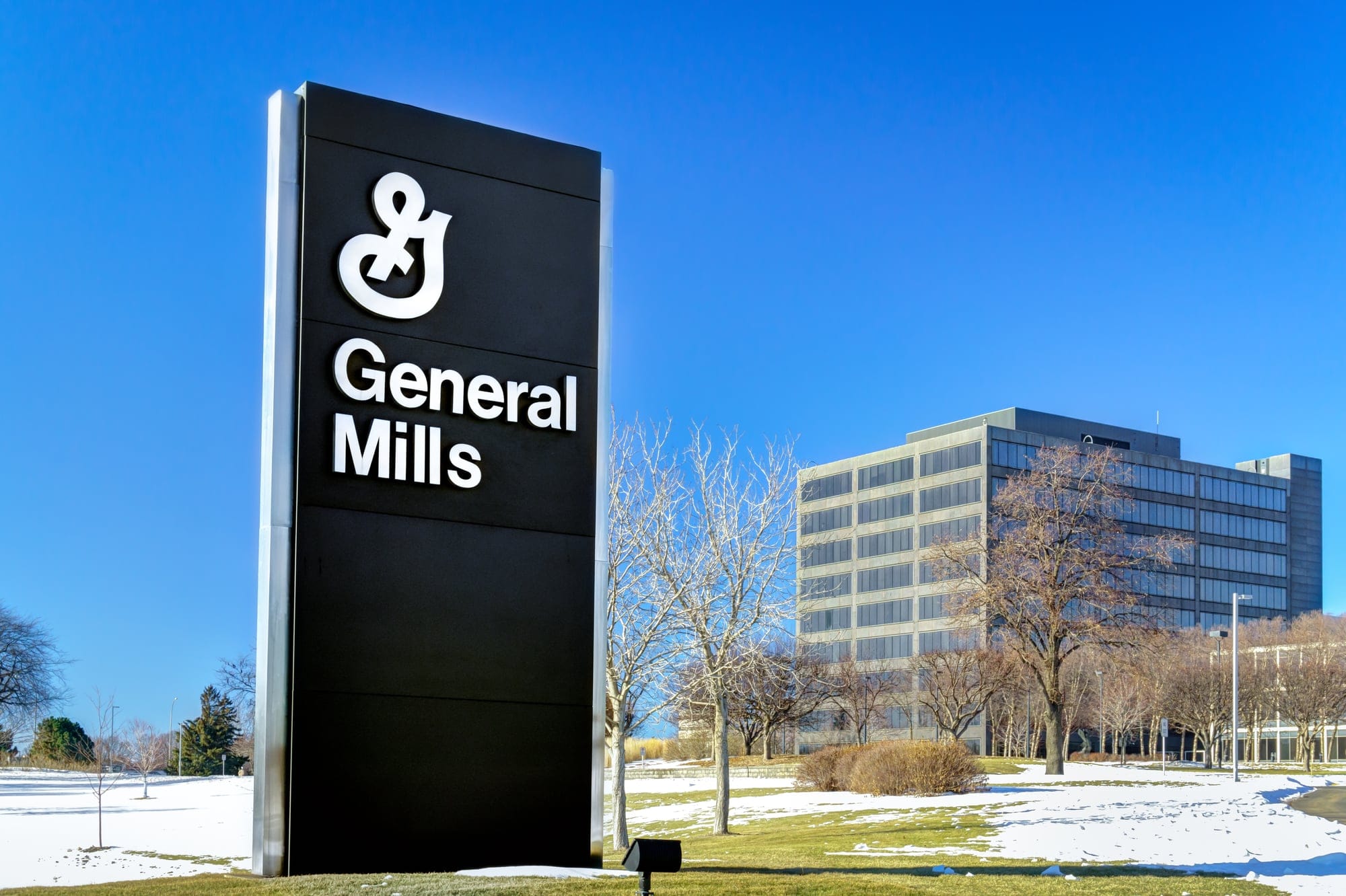Our General Mills SWOT Analysis examines internal and external factors that impact the company's operations and focus on its strengths and opportunities.
Every day you wake up and start your day with a bowl of cereal but have you ever thought about the company that is working tirelessly to manufacture and package billions of cereals in different parts of the world every day? Probably not.
Today, we will introduce you to a company called General Mills, a top manufacturer of cereals and other food items. You would probably have several products manufactured by this company in your kitchen that you consume daily.
First, we will discuss the history of General Mills to make you completely aware of the company. After that, we will conduct a General Mills SWOT Analysis to examine internal and external factors that impact the company's operations.
The history of General Mills goes back to 1966 when a guy named Cadwallader Washburn established his flour mill in Minneapolis, Minnesota. It began as a small mill that produced flour for local customers.
Over the years, Washburn innovated and penetrated the market, and that's when the foundation of General Mills was laid. General Mills was officially established in 1928. Despite the great depression and World War 2, the company flourished due to its innovative ideas.
In the 1930s, the company began focusing more on producing ready-to-eat products. General Mills introduced several products, such as Bisquick and Cheerios, which became a major source of revenue. These brands were loved by the masses and brought recognition to the brand,
In the following decades, General Mills continued to expand and innovate. The company ventured into a restaurant called Red Lobster to enter the restaurant industry. Moreover, General Mills acquired the license to make Yoplait, further increasing the brand's customer base.
The company also bought Häagen-Dazs, which made General Mills famous internationally. In the 2000s, General Mills acquired Pillsbury Company and became one of the largest food companies.
The company kept forming mergers with multiple companies to increase its market share. In 2018, Blue Buffalo became a part of General Mills, which made the brand a leader in the Wholesome Natural pet food category.
General Mills is currently operating in over 100 countries with a portfolio of 100 brands. Isn't it amazing? In 2022, the brand generated revenue of $19.37 billion. Besides generating high revenue, General Mills is also a big source of employment. It has a large workforce that consists of 32,500 employees.
Overall, General Mills has a long history of growth, innovation, and adaptation, from its early days as a small flour mill to its current position as a global food company with a diverse portfolio of popular brands.
Now that you are completely aware of the history of General Mills let's proceed and conduct its SWOT analysis. However, before doing that, let me briefly explain what SWOT Analysis is.
SWOT analysis is a strategic planning tool that helps businesses identify their strengths, weaknesses, opportunities, and threats. Businesses use the SWOT Template to get an overview of where they are currently standing so that they can make strategies for the future accordingly.
So now, let's start our SWOT analysis to see what internal and external factors affect the operations of General Mills.

Strengths of General Mills
In a SWOT analysis, the strengths section refers to the features of an organization that make it superior to its competitors. These are the aspects in which the organization excels and differentiate it from others in the same industry. In this context, we will examine the strengths possessed by General Mills.
Diverse Brand Portfolio
General Mills has a diverse portfolio of popular consumer brands that cover a wide range of product categories, including cereal, baking mixes, yogurt, and frozen foods. These brands are well-known and have been trusted by consumers for many years.
One of the most popular brands that General Mills owns is Cheerios, a line of breakfast cereals made from whole grains. Cheerios have been a favorite of families for generations and are now available in several varieties, including original, honey nut, and multi-grain.
Strong Distribution Network
General Mills's strong and wide-reaching distribution network enables the company to sell its products in over 100 countries worldwide. The company has a global presence, with manufacturing and distribution facilities in different countries and regions, which allows them to respond quickly to changing market conditions and customer needs.
The company has a large sales force and a network of distribution partners that allow them to reach customers in many different markets effectively. This includes large retailers, supermarkets, grocery stores, smaller independent shops, bakeries, and food service providers.
This wide distribution also allows the company to reach more remote areas, even countries with less developed infrastructures.
Focus Towards Health
In recent years, General Mills has been a concerted effort to develop healthier options for its customers. This includes creating products made with whole grains without artificial flavors or colors. This aligns with current consumer trends, as more and more people are becoming health-conscious and are looking for healthier food options.
One example is its cereal line, where it introduced cereals made with whole grains and without artificial flavors or colors. For example, the Nature Valley brand offers products made with whole grains, natural sweeteners, and no artificial flavors, colors, or preservatives.

Weaknesses of General Mills
A SWOT analysis highlights a company's areas of weakness. These are factors that make the company less competitive in comparison to others. These are the aspects where the organization is not as successful as its rivals, which may impede its ability to reach its objectives. Let's examine the factors hindering General Mills's growth in this context.
Heavy Reliance On Developed Markets
General Mills generates a significant portion of its revenue from developed markets such as North America and Europe. The company relies heavily on these regions for its sales and revenue growth.
While these markets are typically more stable and have higher purchasing power, they are also subject to economic downturns, which can significantly impact the company's revenue and financial performance.
During an economic downturn, consumers tend to be more cautious with their spending, which can decrease demand for the company's products. Additionally, during tough economic times, retailers may reduce orders or delay payments, affecting the company's cash flow.
Slow In Digital Transformation
Like many other industries, the food industry is undergoing a digital transformation, and companies are using digital technologies to improve their operations, reach new customers, and gain a competitive edge. However, General Mills has slowly adapted to this trend, which can be considered a weakness.
The company's e-commerce presence is not as strong as it could be, making it difficult to reach and engage with customers who prefer to shop online. Furthermore, the company is not leveraging the power of social media, big data, and other digital technologies as effectively as it could.
This limits the company's ability to understand customer preferences and needs and effectively target marketing efforts.
Limited Presence In Emerging Markets
General Mills has a limited presence in emerging markets, which could be a weakness as these markets are expected to drive future growth in the global food industry. Emerging markets are defined as countries experiencing rapid economic growth and development, with a rising middle class with increasing disposable income.
These markets offer significant growth opportunities for food companies as their populations grow, urbanize, and have more disposable income to spend on food.
However, General Mills is not as well-positioned in these markets as it could be compared to its competitors. This limits the company's ability to tap into these markets' growth opportunities. For example, the company's market share in China, one of the world's largest and fastest-growing food markets, is relatively small.

Opportunities Present For General Mills
The opportunities section in a SWOT analysis is used to identify external factors that a company can use to improve its performance and achieve its goals. Opportunities are the external factors that an organization can capitalize on to grow its business.
In this context, the opportunities section of a SWOT analysis for General Mills will analyze the external factors the company can leverage to improve its performance and reach its goals.
Expansion Into New Markets
Expanding its presence in emerging markets, such as Asia, Africa, and Latin America, is an opportunity for General Mills to tap into new growth opportunities. These markets are expected to drive future growth in the global food industry, as they are expected to grow at a higher rate than mature markets.
Penetrating these markets would allow the company to understand local tastes and preferences better and create products tailored to local consumers. The company could also invest in local marketing and branding efforts to promote its products and build brand awareness in these markets.
Digital Transformation
Investing in digital technologies and improving its e-commerce presence is an opportunity for General Mills to reach new customers and gain a competitive edge.
One of the ways the company could do this is by creating a comprehensive digital strategy that would allow it to leverage the power of digital technologies better to reach customers and gain a competitive edge. This would include building a strong e-commerce presence, making it easier for the company to reach customers who prefer to shop online.
Diversifying Products
Diversifying its product line and exploring new product categories is an opportunity for General Mills to expand its revenue streams. By introducing new products such as plant-based, organic, and functional foods, the company could tap into growing consumer demand in these areas and increase its revenue.
For example, the demand for plant-based products is rising as more consumers are looking for meat-free options. General Mills could take advantage of this trend by introducing new plant-based products, such as meat alternatives, or by reformulating existing products to make them suitable for vegetarians and vegans.

Threats For General Mills
The threats section of a SWOT analysis identifies external factors that could negatively impact a company's performance or competitiveness. These are factors that are outside of the company's control, but that could still have a significant impact on its operations. Let's discuss what threats General Mills has to face.
Increasing Costs of Inputs
As a company that operates in the food industry, the cost of raw materials, energy, and labor can significantly impact its profitability. The cost of raw materials is a significant factor in determining the cost of production for food manufacturers.
General Mills uses various raw materials such as wheat, corn, sugar, and other ingredients in its products. If the cost of these raw materials increases, it will make the production process more expensive and will directly impact the company's profitability
Changing Preferences of Consumers
Consumer preferences and tastes have changed over time. This can present a challenge for companies like General Mills, as they may not always be able to keep up with these changes.
Consumer preferences have been changing at a fast pace. They are looking for healthier options, organic foods, non-GMO, gluten-free, plant-based options, etc. Suppose General Mills is not able to respond quickly to these changing preferences and offer products that meet the current demand. In that case, it may struggle to maintain sales and market share.
Economic Downturns
To operate smoothly, companies need economic stability because, in economic downturns, consumers limit their spending, which causes companies' sales to decline.
This creates problems in cash flows for the company and causes the profits of a company to decline. Currently, the world is anticipating a recession. General Mills feels threatened by the recession because it will cause the sales of General Mills to fall. As a result, the brand will suffer financially.
Market Competition and Lower Demand
Market competition and lower demand pose significant threats to General Mills.
The food industry is highly competitive, with numerous players vying for market share. Consumers have a wide array of choices, including lower-priced private labels, which can impact the sales of branded products.
Additionally, changes in consumer preferences and spending behaviors can lead to fluctuations in demand. Companies must continuously innovate and adapt to stay relevant in a dynamic market environment.
- Example: In 2024, General Mills reported a decline in quarterly sales and a lower-than-expected annual profit forecast.
The company is facing decreased demand for its snack bars and pet food, compounded by rising input costs. Net sales in its North America retail segment, the largest revenue generator, fell by 7%, driven by a 6% drop in volumes.
This decline is partly due to increased competition from lower-priced private labels, as value-seeking consumers shift towards these alternatives without perceiving a loss in quality.
Additionally, higher input costs, such as sugar and labor, along with supply chain disruptions, are pressuring the company's profitability. CEO Jeff Harmening noted that macroeconomic uncertainty is prompting consumers to seek value, affecting both the products they buy and the channels they shop, highlighting the need for General Mills to improve its competitiveness to navigate these challenges.

General Mills SWOT Analysis: Final Word
General Mills is one of the top manufacturers of processed consumer foods. Although it has been operating for more than 150 years, still its brands are some of the most popular brands among consumers.
After looking at the rich history of General Mills, full innovation, and skill, we decided to conduct a General Mills SWOT analysis. The SWOT analysis highlighted the company's strengths, weaknesses, opportunities, and threats.
This article not only made you aware of what internal and external factors impact the operations of General Mills, but it also made you aware of how to conduct a SWOT analysis.
We have conducted this SWOT analysis in the form of an essay. However, suppose you want your SWOT analysis to be concise. In that case, you can display the results of your SWOT analysis in a SWOT Matrix.
If this article has intrigued you about SWOT analysis, look at some of its examples to learn about this amazing yet simple business technique.


![General Mills SWOT Analysis [2024 Updated]](/content/images/size/w300/2024/05/general-mills-swot-analysis-1.jpg)